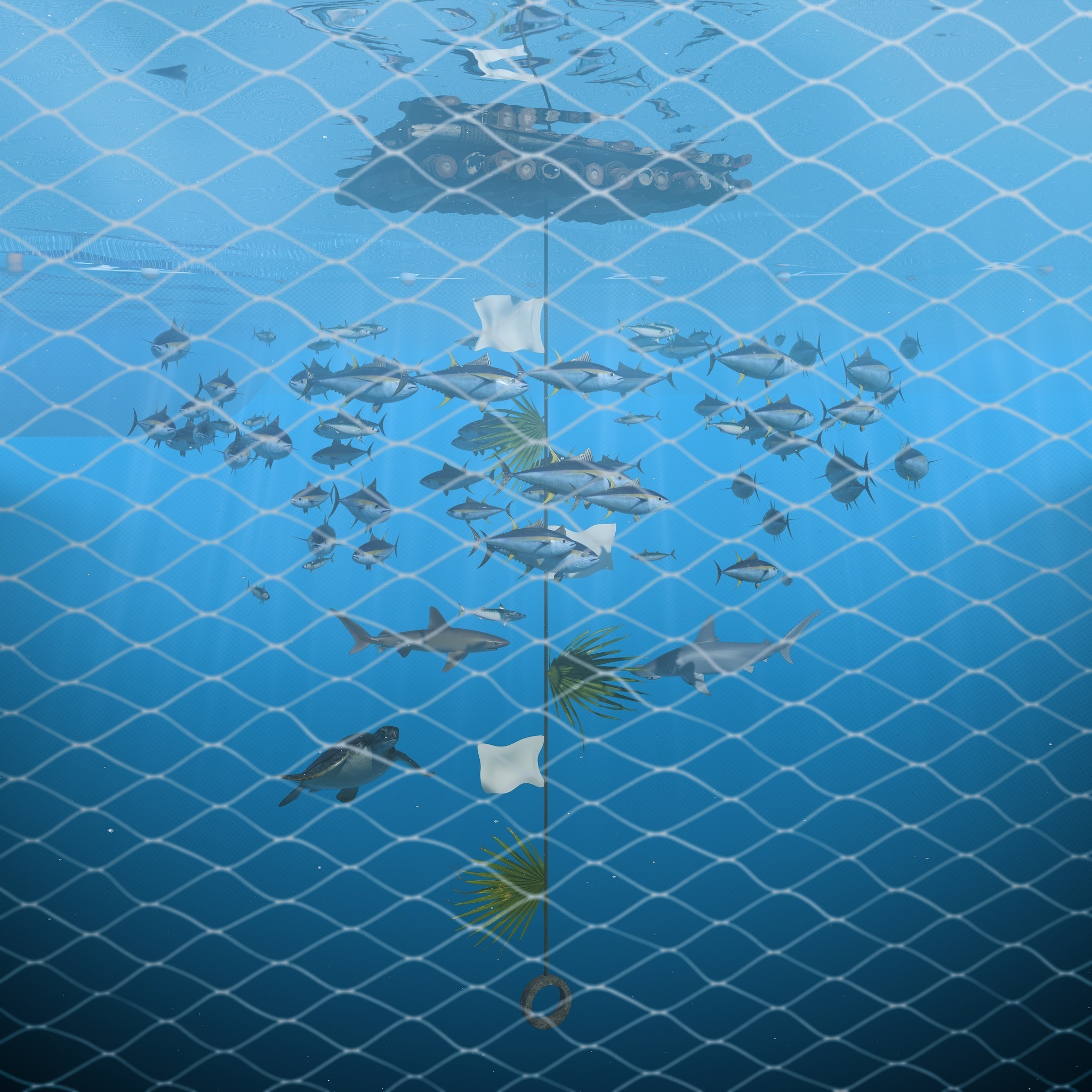- Understanding Fish Aggregating Devices (FADs) and their environmental impact.
- The ecological concerns surrounding FADs, including bycatch and ghost gear.
- Emerging solutions to mitigate FAD-driven pollution and bycatch.
- The role of organizations like Monterey Bay Aquarium Seafood Watch in promoting sustainable fishing practices.
- Actions consumers can take to support sustainable seafood choices.
Fish Aggregating Devices (FADs) play a significant role in modern fishing practices, primarily used to attract tuna. These floating structures, constructed from materials like plastic, netting, and rope, simplify the process of locating and catching fish. However, beyond their immediate purpose, FADs have drawn attention due to their broader environmental repercussions.
FADs inevitably attract a variety of marine species, not just the target tuna. Sharks, sea turtles, and other marine creatures often gather around these devices, increasing their risk of accidental capture—a situation known as bycatch. This unintended catch can disrupt marine ecosystems, depleting populations of non-target species and impacting biodiversity.
The environmental challenges associated with FADs extend beyond bycatch. An estimated 80,000 to 120,000 FADs are deployed each year, many of which are lost or abandoned at sea. Once adrift, these FADs transform into ghost gear, contributing to marine pollution. As they degrade, they break down into microplastics, posing additional threats to marine life and ecosystems.
Innovative solutions are being developed to address the environmental impact of FADs. Biodegradable materials such as bamboo, cotton, and other plant-based fibers are being explored to create FADs that minimize long-term pollution. Moreover, advancements in technology, including satellite and drone systems, are enhancing our ability to monitor and retrieve lost FADs, mitigating their impact as ghost gear.
Organizations like the Monterey Bay Aquarium Seafood Watch program are critical in promoting sustainable fishing. By assessing tuna fisheries based on FAD use and their efforts in preventing, reducing, or removing ghost gear, they inform consumers and businesses on sustainable seafood choices. This initiative helps guide responsible seafood consumption, promoting environmental stewardship.
Consumers hold significant power in driving change. By purchasing seafood from businesses that are transparent about their sourcing and committed to sustainability, individuals can support practices that prioritize ecological health. Choosing tuna that is pole-and-line-caught, troll-caught, or labeled as FAD-free helps ensure a lower impact on marine environments.
In conclusion, the conversation around FADs and their impact on marine life is evolving. Through innovation, education, and conscious consumer choices, we can foster a more sustainable relationship with our oceans. As we confront the challenges posed by FADs, the importance of coordinated efforts among various stakeholders, from scientists to consumers, becomes increasingly apparent. This approach will help preserve marine biodiversity and promote healthier oceans for future generations.
*****
Source Description
🌊There’s more than one kind of FAD—one’s a trend, the other’s a device that can harm our ocean. But just like trends can spark positive change, innovation is transforming fishing practices too.
🦈 The FAD we’re talking about is a fish aggregating device—floating rafts made of plastic, netting, and rope that attract tuna in the open ocean. While FADs make tuna easier to catch, they also attract sharks, sea turtles, and other marine life, which often get accidentally caught too.
‼️The harm doesn’t stop there. An estimated 80,000 to 120,000 FADs are deployed every year—and many are later lost or abandoned. These FADs risk becoming ghost gear—harming marine life, breaking down into microplastics, and adding to marine pollution.
✨ The good news? Solutions to FAD-driven pollution are in the works—from biodegradable FADs made from bamboo, cotton, and plant-based materials to satellite and drone tech that are helping track and recover lost FADs.
🔍What are WE doing? The Monterey Bay Aquarium Seafood Watch program considers FAD use when assessing tuna fisheries because they often have a lot of bycatch of other marine life. We also check if fisheries work to prevent, reduce, or remove ghost gear.
📢 What can YOU do? Buy from businesses that share where their seafood comes from and commit to sustainability—they’re more likely to sell green- or yellow-rated seafood. If the tuna is caught with FADs, make sure it’s from the eastern Pacific Ocean. Also, choose canned tuna labeled:
✅ pole-and-line-caught or pole-caught
✅ troll-caught
✅ FAD-free or free school
📷 2 and 3: @oceanconservancy/The Global Ghost Gear Initiative.


